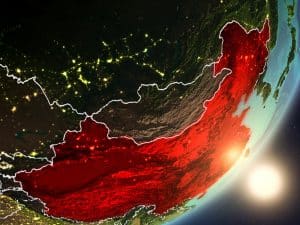Today, Japan is passing through an era known as the Heisei period, which has defined the country since 1989. Most Japanese people consider the Heisei period a time of hardship, since it has been marked by drastic changes in the country’s economic, social, political and cultural structures, which have given rise to a society of haves and have-nots. This sharply contrasts with the idea that “Japan is a 99% middle-class country,” an observation often made by late-20th-century sociologists. Indeed, from the 1950s to the 1980s, Japan was able to create a Keynesian social pact, but since then it has adopted neoliberal policies of austerity, deregulation and privatization in an attempt to boost productivity.
These policies have done little more than deregulate the labor market, creating a mass of precarious and highly overworked workers. Long-term employees, once a centerpiece of the Japanese Keynesian compact, are now being rapidly replaced with low-paid part-time workers who enjoy few benefits. Meanwhile, real wages in Japan have declined significantly, throwing millions into poverty. The country’s export industry has also contracted significantly, lowering its ranking in world GDP growth from second to third place, behind China.
As a result of these changes, an awful work culture has taken hold in Japan, housing development now favors individuals living alone and family relationships are widely perceived as having broken down. Poverty, once hidden behind the curtains of rising living standards and social cohesion, is now a much talked-about and increasingly polarizing issue as inequality has worsened. These growing disparities have also created a widespread backlash against the political system. The ruling Liberal Democratic Party (LDP) is seen as corrupt, incompetent bureaucrats who have failed to address the country’s growing problems.
Thus, the postwar consensus that defined Japanese society after the destruction of World War II is coming apart. But how did this consensus come about in the first place? To answer this question, one must first understand Japan’s era of reconstruction, which involved complex social forces and historical conjunctures that still shape its national identity and social structures.
After the Japanese Imperial Army was defeated and the U.S. military took over the country’s administration, Japan found itself in turmoil. In the 1940s, Japan was thought of as a relatively crime-free haven, but it was actually filled with roving gangs, violence, poverty, a proliferating black market and high levels of prostitution. Alongside this, left-wing social forces battled corporations and gained widespread public support even as the United States and conservative forces sought to contain them with anti-Communist policies. Industry was nearly wiped out, and the U.S. Army had to import foodstuffs to avert a famine as production of simple agricultural goods fell to unsustainable levels. Meanwhile, the loss of more than 2 million soldiers and 800,000 civilians lay on the collective consciousness as the U.S. colonial government sought to construct a new political system based on democratic values. From this social and industrial chaos, Japan grew to become one of the world’s largest economic producers by the 1960s.
In essence, the incredible success of Japan and its now slow decline come out of the Fordist-Keynesian political economy that the country constructed out its turmoil. From the beginning, the U.S. colonial administration sought to preserve some of the high-level conservative political leaders who had led the Japanese war effort, such as Emperor Hirohito and Nobusuke Kishi (the Japanese administrator of Occupied Manchuria), so as to maintain social cohesion. As prime minister, Kishi established the single-party rule of the LDP, which would guide Japan’s recovery. To sidestep the increasingly popular socialists, the LDP combined conservative and centrist forces into a central party, advocated rapid economic development, adopted pragmatic policies, pursued large-scale construction projects and established the company-employee system of lifetime employment. With close ties to various companies and financial-industrial monopolies, the LDP could dominate politics as the Japanese economy grew rapidly in the 1950s. With a highly successful land reform—which helped increase agricultural production—and with the newly gained wealth of a new stratum of middle-class independent farmers, the LDP gained another valuable ally through its large agricultural subsidies to the countryside. And because the LDP was close to the major Japanese business interests, it could use its political influence to regulate certain industries, increase labor productivity and grow GDP through unfair trade practices. But the “economic miracle” of Japan did not take place thanks only to the LDP; the United States strongly advocated the land reform and provided a low exchange rate for the yen (which allowed for Japan’s export industry to thrive) and access to U.S. markets and technology. Most importantly, the United States jump-started Japan’s industry with the Korean War.
A major factor in Japan’s economic success was the Fordist-Keynesian system it created, which combined a heavily top-down planned economy with heavy subsidies and social spending, along with a highly productive export-oriented industry. But this system began to run into significant problems in the 1970s as the world increasingly globalized and Keynesian economic planning was replaced by neoliberal economic models that emphasized free trade and open markets. With the opening up of several countries, especially China, to the capitalist world market, Japan began to lose its edge as it faced competition from new resource markets and countries with cheap, highly exploitable labor. The problems that many workers in Japan now face—such as precarious work, high hours and low pay—come from this era, when Japanese companies began to extract more and more surplus labor from of their employees in an attempt to remain competitive.
As global competition gave rise to high efficiency, Japanese companies that could once produce big profits became zombielike—unproductive yet still propped up by government subsidies. Alongside this, the global shift toward neoliberalism entailed a shift in power from industrial to financial capital, which, on a densely populated island nation, led to the incredible Japanese asset bubble of the 1980s. When the G7 countries forced Japan to lower its trade imbalances, the correction failed to adequately fix the market, instead prompting the government to continue monetary easing policies while eroding what remained of Japan’s export advantage. Economic and political problems began to mount as the 20th century came to a close. Thus, the country was thrown into a decades-long turmoil known as the Lost Decade, when the Japanese government decided to increase interest rates to control the growing bubble, which instead popped it and sent the economy into a downward spiral. It is this “Lost Decade” and the lead-up to it that continues to define contemporary Japan.
The question now is, What are the future prospects for a Japanese working-class movement?
References
Kingston, Jeff. Contemporary Japan: History, Politics, and Social Change since the 1980s. Wiley-Blackwell, 2013.










